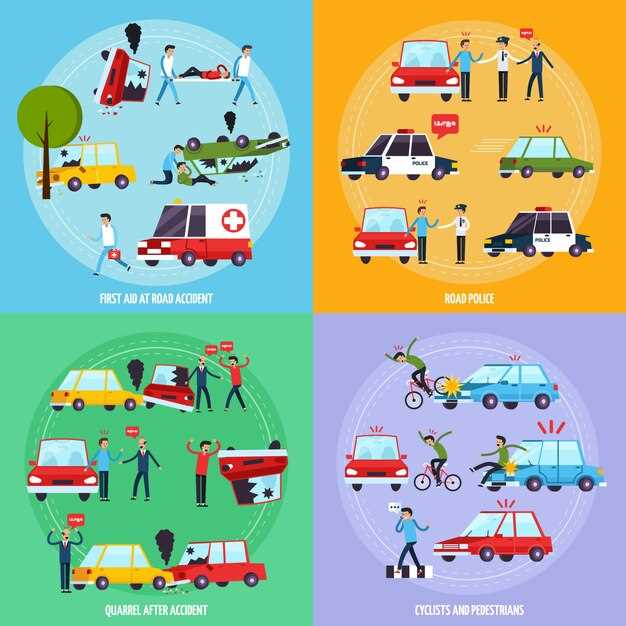
Driving is an essential part of modern life, providing convenience and mobility. However, it also comes with significant responsibilities. Making even minor mistakes behind the wheel can lead to severe consequences, including accidents that can endanger lives. Understanding the common driving errors and how to avoid them is crucial for every driver, regardless of their experience level.
Many accidents occur due to a lack of attention or poor decision-making. Distracted driving, such as using a phone while behind the wheel, has become a widespread concern. It’s vital to recognize that taking your eyes off the road, even for a few seconds, can result in catastrophic outcomes. By committing to remain focused and minimizing distractions, drivers can significantly reduce their risk of being involved in an accident.
Equally important is the understanding of road conditions and vehicle performance. Many drivers underestimate the impact of weather conditions, such as rain or fog, on their ability to drive safely. Additionally, neglecting vehicle maintenance can lead to mechanical failures that may compromise safety. By being proactive about these elements, drivers can enhance their overall safety and composure on the road.
In conclusion, avoiding common driving mistakes is a vital step toward ensuring the safety of yourself and others while traveling. By staying aware, maintaining your vehicle, and committing to prudent driving behaviors, you can help prevent accidents and contribute to safer roadways for everyone.
Recognizing and Ignoring Blind Spots While Changing Lanes
Blind spots are areas around a vehicle that cannot be directly observed by the driver when checking mirrors. These zones pose a significant risk when changing lanes, as they can conceal other vehicles, pedestrians, or cyclists, leading to potential accidents.
To enhance safety, it’s crucial to recognize and compensate for blind spots. Start by adjusting your side and rear-view mirrors to minimize these areas. Ensure that the mirrors are set correctly: the side mirrors should be angled outward slightly, so that they capture a wider view of the road.
Before changing lanes, always perform a comprehensive check of your surroundings. This includes checking your mirrors, turning your head to visually confirm that no one is in your blind spot, and using turn signals to communicate your intentions to other drivers.
It’s also beneficial to develop an understanding of your vehicle’s specific blind spots. Larger vehicles, such as trucks and SUVs, typically have more extensive blind zones than smaller cars. Drivers should be aware that motorcycles can also easily vanish from view due to their smaller size.
Ignoring blind spots can lead to severe consequences. It is imperative to remain vigilant and take the time necessary to ensure that the lane is clear before proceeding. Defensive driving techniques, such as maintaining a safe following distance, can further mitigate risks associated with shifting lanes.
In summary, recognizing blind spots is integral to safe lane changes. Always check mirrors and physically look over your shoulder before changing lanes to avoid accidents and promote safety on the road.
Understanding the Dangers of Distracted Driving and How to Minimize It

Distracted driving is a significant cause of accidents, resulting in severe injuries and fatalities. It is defined as any activity that diverts attention from driving, including talking or texting on a phone, eating, or adjusting the radio. According to research, taking your eyes off the road for just a few seconds can increase the risk of a crash dramatically.
One of the most prevalent forms of distraction is mobile device usage. Texting while driving is particularly dangerous because it requires visual, manual, and cognitive attention. Studies indicate that reading or responding to a text increases the likelihood of an accident by 23 times. This staggering statistic highlights the urgency of addressing this form of distraction.
Additionally, passengers can also be a source of distraction. Engaging in heated discussions or managing unruly children can divert focus from the road. Furthermore, in-vehicle technologies and infotainment systems, while designed for convenience, can lead to cognitive overload, causing drivers to lose sight of their primary task–driving.
To minimize the risks associated with distracted driving, consider the following strategies:
- Silence your mobile devices: Use “Do Not Disturb” features while driving to prevent incoming notifications from causing distractions.
- Plan ahead: Set your GPS and adjust music before starting your trip to avoid fiddling with devices while driving.
- Limit passenger interactions: Establish ground rules for conversations in the vehicle, ensuring they do not interfere with your focus.
- Practice mindfulness: Stay present and consciously focus on driving, being aware of your surroundings.
- Take breaks: If you feel fatigued or overwhelmed, it is essential to pull over safely and rest.
By understanding the dangers of distracted driving and implementing effective strategies, you can significantly reduce the risk of accidents. Prioritizing focus on the road not only protects yourself but also ensures the safety of others sharing the roadway.
Mastering Proper Following Distances to Prevent Collisions

Maintaining an appropriate following distance is essential for safe driving and collision prevention. The general rule of thumb is to maintain a minimum of three seconds of distance between your vehicle and the one in front of you. This distance provides adequate time to react to sudden stops or emergencies.
To determine the three-second rule, select a fixed point on the road, such as a sign or a tree. When the vehicle in front of you passes that point, start counting. If you reach the fixed point before you finish counting to three, increase your following distance. In adverse weather conditions like rain, fog, or snow, it is advisable to extend this distance to four or five seconds to account for reduced visibility and longer stopping times.
Tailgating is a dangerous habit that reduces reaction time and increases the likelihood of rear-end collisions. Driving too closely to the vehicle ahead does not grant you sufficient time to respond to sudden changes in traffic. This is especially critical in heavy traffic situations where unpredictable stops are common.
In addition to weather conditions and traffic circumstances, it is essential to consider the type of vehicle you are driving. Larger vehicles, such as trucks and SUVs, require greater stopping distances. Adjust your following distance accordingly to ensure safe space for all road users.
Lastly, adapting your following distance can significantly enhance your overall driving experience. It encourages a calmer mindset, reduces stress, and helps you maintain better control over your vehicle in emergency situations. By mastering the art of maintaining proper following distances, you contribute to a safer driving environment for yourself and others on the road.





